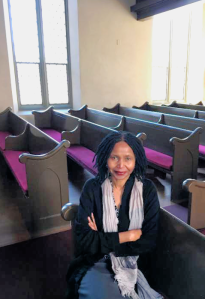 The end of the calendar year, the end of a successful building project, and inquiring minds want to know, what’s next?
The end of the calendar year, the end of a successful building project, and inquiring minds want to know, what’s next?
You’ve seen our beautiful new parish house, and you know how it is already reinvigorating our parish programs and reigniting our ministry in the community.
The following is an update on our financial picture and how the original project roadmap is progressing towards its conclusion.
Since we began raising money for the capital campaign, the scope of the project has changed in some important ways:
- Expanded third floor youth and choir spaces.
- Totally remodeled and expanded Campus Ministry Center, including a new kitchen.
- Replacement of the stone wall at the Memorial Garden and flanking a widened circle drive.
- Modifications to the sprinkler system mandated for the entire building — old and new.
- Painting, carpeting, and new ceilings for the old Yates and Battle wings.
- State of the art HVAC controls and new chiller — resulting in lowered utility costs.
- French doors along the hallway beside the Great Hall and darkening shades on the Great Hall windows.
- AV system in the Great Hall, wireless access points throughout the buildings, voice over internet telephone system, and computer wiring in all areas.
The resulting building will have a final construction cost of slightly more than $9 million. This includes substantial unforeseen costs of joining our old building with the new, including code requirements.
Many of you have completed your Light on a Hill pledge early or increased your original pledge along the way; however, our original plan to limit our borrowing to $2.75 million is probably too optimistic. We may need to borrow $3 million or more.
As we begin the process of determining our final payment to the contractor, we are depending on substantial pledge payments here at the end of 2014. Any advance payments we receive — of regular pledges or legacy gifts — will strengthen our financial position now so that we are better able to weather unforeseen risks later.
We have promised the bank that we will keep $300,000 in cash in the development account during the life of the loan. Our cash flow model indicates that will start to be difficult in the second half of 2019. In 2020, our interest rate goes up from 3.25% to 6.50%. The project financing oversight committee will need to plan for a retire-the-debt campaign to begin perhaps as early as 2019 and a refinance of the loan in 2020. Incremental fundraising may be necessary as well.
Using the project roadmap and fairly sophisticated modeling, we’ve tried to be meticulous and farsighted in our planning. The operating budget will support the building debt starting with a $5000 contribution in 2014, and increasing by $5000 a year through 2020, when that support is capped at $35,000.
The bulk of our operating budget will be directed towards living into our building and our ministry — funding our programming, outreach, worship, pastoral care, physical plant, and staff. The 2015 annual campaign is vitally important to our use of our new building, and your annual pledge enables us to budget and plan successfully.
Other needs on the horizon include long-deferred work on the Chapel, from repairing a very porous roof to removing bad paint and replacing it with a historically appropriate lime wash. We will need to address these problems starting in 2015.
Timely completion of building fund pledges and good response to our 2015 annual campaign will place us in an excellent position to move forward into the future.
If you have not made your annual fund pledge for 2015, consider doing it now. Use the pledge packet you received in the mail or access the online 2015 annual fund pledge page.
To pay your building fund pledge or make an additional gift, go to the Light on a Hill: Building to Serve page.
Walker Mabe



